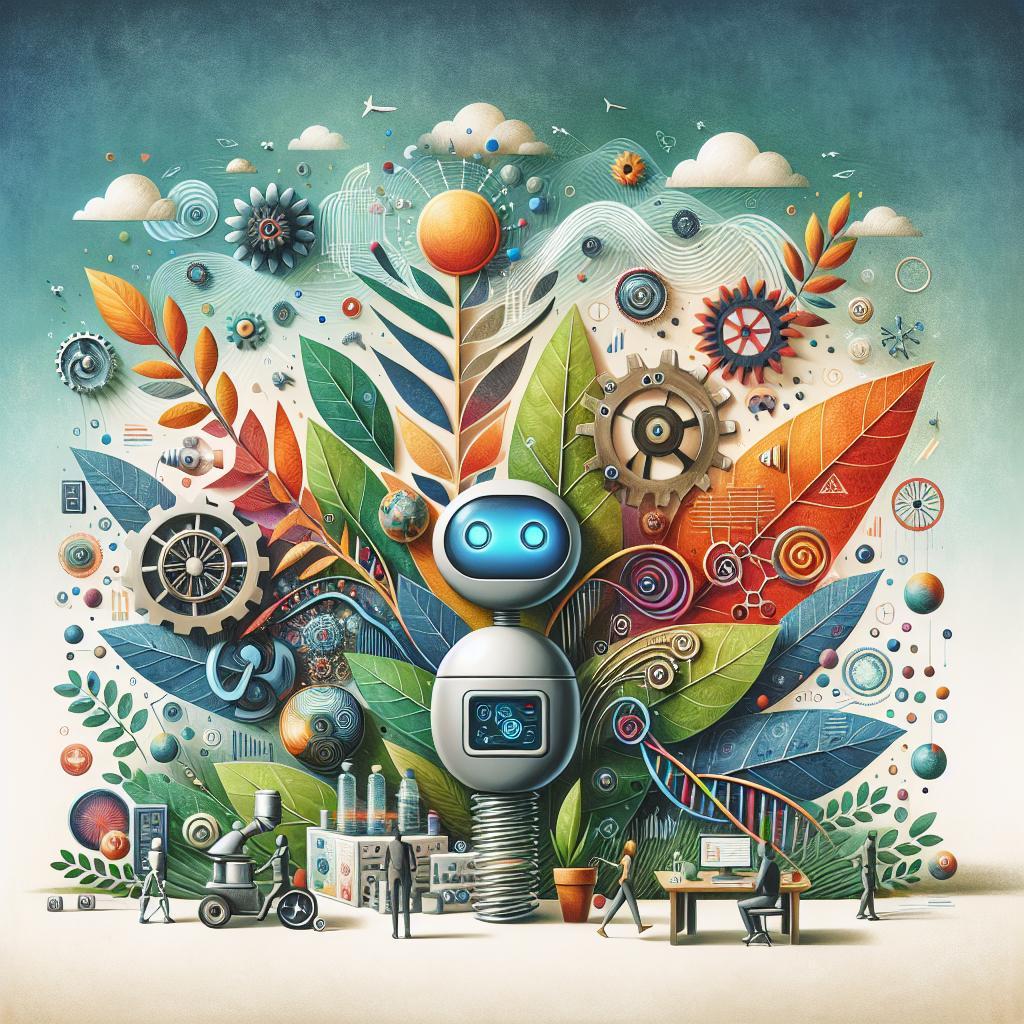In today’s fast-paced digital landscape, where interaction often happens in the blink of an eye, chatbots have emerged as our trusty sidekicks, wielding the power to transform mundane tasks into delightful experiences. Imagine a world where user interface design seamlessly blends with conversational AI, creating a synergy that not only engages users but also anticipates their needs. Exciting, right? Whether you’re a seasoned designer, a tech enthusiast, or just someone curious about how these digital communication wizards work, this article is your gateway to unlocking the potential of chatbots in user interface design. Join us on a journey where we’ll explore the art of crafting conversational experiences that feel as natural as chatting with a friend, all while ensuring that the design elements are as smooth and intuitive as a well-paved path. Get ready to dive into the world of chatbots and discover how to create a seamless experience that leaves users not just satisfied, but genuinely delighted!
Understanding User Needs: The Heart of Effective Chatbot Design
To craft truly effective chatbots, designers must immerse themselves in user needs and behaviors. It’s essential to understand what users expect from a chatbot, not just in terms of functionality but also in how they wish to interact with it.
- Empathy Mapping: A technique that helps visualize users’ feelings and thoughts when they engage with the chatbot.
- Task Analysis: Breaking down specific tasks to understand the steps users take, ensuring the chatbot simplifies their journey.
- User Feedback: Regularly collecting and analyzing user feedback allows for ongoing improvements based on real interactions.
Integrating user-centric insights into the design process enables the creation of chatbots that resonate with their audience. By thoughtfully addressing user pain points and preferences, designers can build experiences that foster trust and satisfaction. Here’s a quick comparison of various user-centered design methodologies:
| Methodology | Focus Area | Benefits |
|---|---|---|
| Design Thinking | Empathy and Iteration | Encourages creative solutions based on user insights. |
| User-Centered Design | User Requirements | Prioritizes user needs throughout the development process. |
| Agile Development | Flexibility | Allows for quick iterations based on user feedback. |

Crafting Conversations: Tone, Language, and Personalization Strategies
In the realm of chatbot interactions, tone and language play pivotal roles in shaping user experiences. Understanding your audience allows you to tailor your chatbot’s personality to align with their preferences and expectations. A friendly, approachable tone can foster a sense of trust and reassurance, while concise language can make the interaction feel efficient and straightforward. To achieve optimal engagement, consider refreshing your chatbot dialogues periodically to reflect current trends and user feedback, ensuring that conversations remain relevant and engaging. Here are some strategies:
- Define the personality: Create a persona that resonates with your target audience.
- Use relatable language: Incorporate colloquialisms that suit the demographic you’re targeting.
- Be adaptive: Modify tone based on the context of the conversation, from casual chats to more formal inquiries.
Moreover, personalization strategies are essential for enhancing user satisfaction and loyalty. By gathering data on user preferences and behaviors, your chatbot can provide tailored recommendations, reminders, and responses, creating a sense of individualized attention. Dynamic interactions can be further optimized by implementing context-aware responses that adjust based on user history or current trends. A simple approach can be detailed in the table below:
| Personalization Method | Description |
|---|---|
| User Preferences | Utilize past interactions to predict and suggest content or products. |
| Contextual Awareness | Leverage user location or time for relevant suggestions. |
| Feedback Loops | Encourage users to provide feedback for continuous improvement. |

Integrating Visual Elements: Enhancing User Engagement with Design
Incorporating visual elements into the design of chatbots can significantly enhance user engagement, making interactions feel more intuitive and enjoyable. For instance, utilizing vibrant colors and appealing images can draw users in, creating a positive first impression. When designing a chatbot interface, consider the following elements:
- Icons: Use recognizable icons to represent actions, helping users navigate more effortlessly.
- Animations: Subtle animations can guide users’ attention and make the chat interface feel more dynamic.
- Typography: Choose clear and aesthetically pleasing fonts that improve readability and convey the brand’s personality.
- Buttons: Design attractive and large buttons to encourage interaction.
To ensure a seamless experience, consistent visual themes are crucial. A cohesive design not only strengthens brand identity but also alleviates user confusion. For instance, a color palette that mirrors your brand can evoke familiarity. Here’s a simple breakdown of how colors can influence user perception:
| Color | Emotion | Usage |
|---|---|---|
| Blue | Trustworthy | Best for financial and tech applications |
| Green | Inviting | Ideal for health and wellness |
| Yellow | Optimistic | Perfect for playful brands |

Testing and Iterating: Continuous Improvement for a Flawless Experience
To achieve the ultimate user experience with chatbots, continuous testing and iteration are essential components of the design process. By regularly assessing the chatbot’s performance, designers can uncover insights into user behaviors and preferences. This creates valuable opportunities to refine and enhance the interface. Consider conducting usability tests that involve real-user interactions, which can yield feedback in areas such as:
- Clarity of prompts: Are users easily understanding what the chatbot is asking?
- Response accuracy: Does the chatbot provide relevant and helpful answers?
- Engagement levels: Are users interacting or disengaging from the chatbot?
Moreover, leveraging analytics tools allows designers to monitor key performance indicators over time. For instance, tracking metrics such as completion rates and user satisfaction scores helps in identifying specific points of friction within the interaction flow. This data can be displayed in a simple comparison table to highlight changes in user engagement before and after implementing adjustments:
| Metric | Before Iteration | After Iteration |
|---|---|---|
| Completion Rate (%) | 65% | 85% |
| User Satisfaction Score (1-10) | 6.2 | 8.4 |
| Average Response Time (seconds) | 4.5 | 3.0 |
Incorporating regular feedback cycles not only leads to a more user-centric design but also fosters a culture of ongoing improvement, ensuring that the chatbot evolves in harmony with user expectations and technological advancements.
Insights and Conclusions
As we wrap up our exploration of chatbots and user interface design, it’s clear that the future of digital interaction is filled with exciting possibilities. By weaving a chatbot into the very fabric of your user experience, you’re not just adding a feature; you’re crafting a conversation that resonates. Remember, it’s all about creating a space where users feel understood and valued.
So, whether you’re a seasoned designer or just starting your journey, don’t shy away from experimenting with these dynamic tools. Embrace the power of thoughtful design and the magic of chatbots to foster connections that feel anything but automated.
As you set out to build seamless experiences, keep your users at the heart of your design. After all, when technology speaks their language, the everyday becomes extraordinary. Happy designing!

